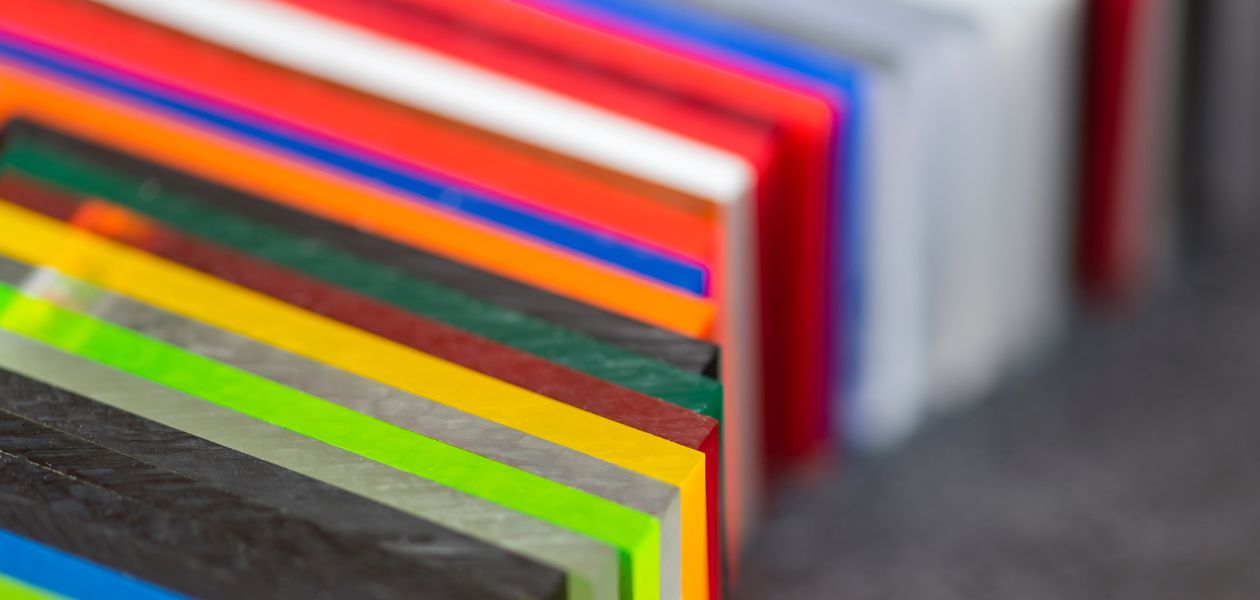How Do I Choose the Right Material for My Sign?
A guide on selecting materials based on durability, cost, aesthetic appeal, and environmental factors (aluminum, acrylic, wood, etc.).

The material you select not only affects the sign's appearance but also its durability, cost, and ability to withstand environmental conditions. Whether you're designing an outdoor billboard, a storefront sign, or an elegant indoor display, each material has its own strengths and is suited for different purposes.
In this guide, we’ll help you understand the key factors—durability, cost, aesthetic appeal, and environmental suitability—that you should consider when selecting the right material for your sign. We’ll explore some of the most common materials used in sign manufacturing and explain how each can meet your business needs.
1. Durability: How Long Will Your Sign Last?
Durability is one of the most important factors when selecting a material for your sign. You want to ensure that your sign can withstand the elements, especially if it’s placed outdoors. Some materials are more resistant to weather conditions like rain, heat, snow, and wind, while others are better suited for indoor use.
- Aluminum : Aluminum is one of the most durable and weather-resistant materials for both indoor and outdoor signs. It’s lightweight, rust-resistant, and can endure extreme temperatures and weather conditions. This makes it ideal for storefront signs, outdoor directional signage, and large outdoor displays. It also has a sleek, modern look that works well for professional businesses.
- Acrylic : Acrylic is a versatile, transparent material that is often used for indoor signs or for outdoor signs that require a glossy, high-end finish. It’s resistant to UV rays and won't fade as quickly as some other materials. However, it can crack or chip under impact, so it’s best for locations where signs won’t be exposed to heavy physical contact.
- PVC (Vinyl) : PVC is a cost-effective and durable material commonly used for temporary signs, banners, or wall graphics. It’s weather-resistant and can be customized in various thicknesses, but it may not last as long as metal or acrylic in outdoor conditions.
- Wood : Wood offers a more natural, rustic appeal and can be used for a variety of signs, from storefronts to outdoor monuments. While wood is durable, it is more vulnerable to weathering, such as warping, rotting, or fading, especially if not properly sealed. It's best used in areas with mild climates or for indoor applications where aesthetics are the priority.
2. Cost: How Much Should You Spend?
The cost of materials varies widely, and the type you choose will depend on your budget and the longevity you expect from your sign. Here are some materials to consider based on cost-effectiveness:
Vinyl/PVC : These materials are among the most affordable and are ideal for temporary signage or short-term promotions. PVC signs can last for several years with proper care but aren’t the best option for permanent or high-traffic areas.
Aluminum : While slightly more expensive than vinyl, aluminum is still a cost-effective option for long-term signage. It provides excellent durability and a professional look that justifies the price, making it a popular choice for businesses looking for high-quality, long-lasting signs.
Acrylic : Acrylic is generally more affordable than premium materials like stainless steel or wood but can still give your sign a high-end look. It’s a good choice for businesses that need sleek, modern signage on a budget but don’t want to compromise too much on aesthetics.
Wood : Wood signs can be either inexpensive or high-end depending on the type of wood chosen. Basic plywood signs are affordable, while high-quality hardwood options may carry a higher price tag. If you’re looking for a rustic or vintage feel, wood could be a great material, but it may require additional maintenance costs in the long run due to weathering.
3. Aesthetic Appeal: What Style Suits Your Brand?
The aesthetic of your sign plays a significant role in how your business is perceived. Whether you want something sleek and modern, classic and rustic, or bold and eye-catching, choosing the right material can enhance your brand’s identity.
Acrylic : Acrylic signs offer a glossy, polished finish and can be made in a variety of colors, shapes, and sizes. It’s often used for contemporary businesses, such as tech companies, medical offices, and retail stores that want a clean, sophisticated look.
Aluminum : With its sleek, professional appearance, aluminum is a popular material for businesses that want to project an image of strength, modernity, and professionalism. It can be finished with various coatings or graphics to create a dynamic, eye-catching display that’s both durable and aesthetically appealing.
Wood : Wood is an excellent material for businesses with a rustic, vintage, or earthy brand. It offers a natural texture and warmth that can be customized with hand-carved lettering or distressed finishes for a more unique look. Wood is perfect for restaurants, cafes, or boutique businesses that want to evoke a cozy, inviting atmosphere.
PVC: PVC and vinyl signs offer flexibility and creativity. They’re perfect for seasonal promotions, grand openings, or events where you need a sign that can be easily changed or transported.
4. Environmental Considerations: What Is the Best Material for My Environment?
Understanding your environment and the potential conditions your sign will be exposed to is crucial when choosing a material. You want your sign to not only look great but also to survive the environmental challenges it might face.
- Aluminum : As one of the most weather-resistant materials, aluminum is perfect for areas with extreme weather, including high winds, snow, or heavy rain. It’s corrosion-resistant, making it suitable for coastal areas with salty air.
- Acrylic : Acrylic is great for areas with lots of sun since it’s UV-resistant and won't fade quickly. However, in high-moisture areas or regions with extreme temperatures, acrylic might not hold up as well as aluminum.
- Wood : Wood is a natural material, which means it can be susceptible to environmental damage if not treated properly. It works best in milder climates or as part of indoor décor. For outdoor use, wood signs need to be sealed and maintained regularly to protect them from moisture, rot, and pests.
- Recycled Materials : If sustainability is important to your brand, you may want to consider signs made from recycled or eco-friendly materials. Recycled aluminum, eco-friendly PVC, and sustainably sourced wood are good options to reduce your environmental impact.
Choosing the right material for your sign depends on a variety of factors including durability, cost, aesthetic appeal, and environmental considerations. It’s important to balance these elements to create a sign that not only looks great but also lasts for the long haul and serves its purpose effectively.

Before making a final decision, consider your business’s specific needs and environment, and consult with us to help guide you in selecting the best material for your project.
Ready to get started? Contact Calibre Signs today and let’s discuss the perfect material for your business sign!



